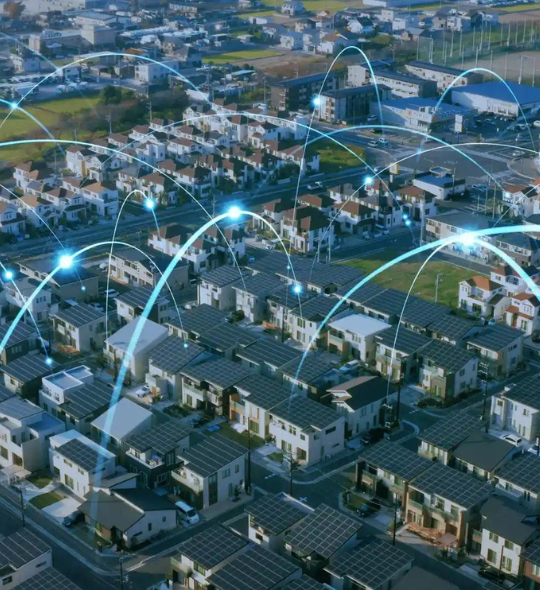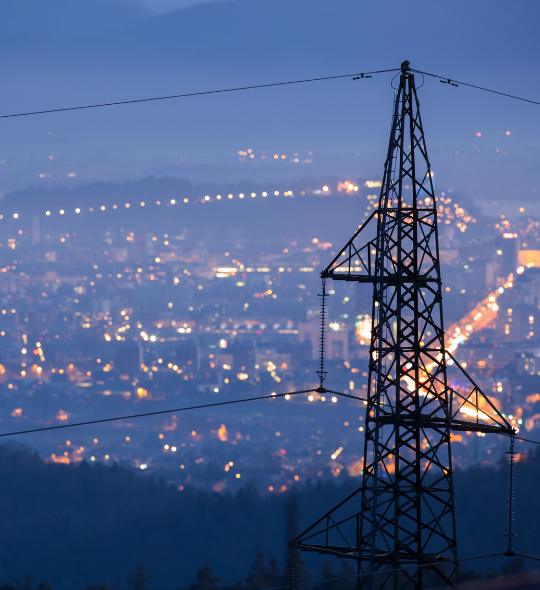
With conversations surrounding increasing energy usage, climate change, distributed energy resources, and more, many are wondering what roles will the electricity grid or system operators play?
We’ve all heard our parents and grandparents complain that things were better when they were young. From the quality of appliances, to the price of bread, and the performance of the Toronto Maples Leafs (sorry), things were better in the good old days. When it comes to electricity and the grid, the same nostalgia maintains a grip on our imagination. Things used to be simple: a big plant produces power and then sends it to where it’s needed – job done.
Nowadays, the increase of intermittent renewables, behind-the-meter generation, industry deregulation, demand response programs, microgrids, and battery technology are causing rapid and systemic changes to how grids operate.
Why you should be optimistic about the future of the electricity grid (despite the challenges)
Power generation is no longer a one way street, and trying to maintain adequate supply for 21st century demand with 20th century infrastructure is becoming increasingly difficult. Soaring costs and blackouts both point to the obvious: the current system is in dire straits.
The impact of climate change and new technologies is also increasing the volatility of daily demand usage. For example, the growing midday solar energy spikes as well as electric vehicle (EV) charging – which usually occurs during Peak hours – are just two variables making usage patterns more erratic.
At this critical juncture, it is more important than ever to think about the future of the electricity grid. While the International Energy Agency estimates that $300 billion worth of investment is needed by 2030 from grid companies to modernize, this state of affairs should be seen as an opportunity, rather than a threat.
Purely reactionary thinking is not going to solve the problem: system operators trying to combat reduced revenues due to grid defection (customers using alternate power solutions), by raising revenue requirements and driving utilities to raise fixed delivery rates, will only create a self-perpetuating cycle by driving more rate payers away.
Instead, companies should view the coming years as an opportunity to create new and innovative services, like peer-to-peer energy trading platforms, in line with changing regulations. Business as usual is changing, as regulations shift from a cost-plus compensation model – which delivers a return on top of grid operational capital costs – towards a paradigm of rewards based on efficiency and innovation.
The future of the electricity grid entails greater decentralization, and a democratization of how we use and produce energy.
In other words, the way (and how cleverly) energy is delivered is becoming more important than the amount of energy being delivered, with an emphasis on waste reduction and efficiency gains. This evolution of the electrical grid is part of a larger economic paradigm shift, namely the Fourth Industrial Revolution.
This term pertains to the impact that digitization and automation are having on how we do business, as asset sensors proliferate throughout the grid to provide predictive maintenance and machine learning capabilities.
As it stands, a system operator is being swamped with data from thousands (and potentially millions) of sources (smart devices, meters, microgrids, energy generators, households, etc.) and they’re relatively ill-equipped to handle it. the future of the electricity grid entails greater decentralization, and a democratization of how we use and produce energy.
The spread of distributed generation (e.g. rooftop solar) and storage (e.g. EVs or water heaters) has greatly increased the number of factors in play. Fortunately, this proliferation is coinciding with the rise of the Industrial Internet of Things (IIOT) – a subset of the more familiar Internet of Things (IOT) that covers everything from smart ovens to wearables.
Incorporating sensors into the various solar panels, EV charging stations, or home meters (and wider device ecosystem) allows for real-time demand and supply monitoring, as well as the ability to fine-tune usage at an unprecedented local or sub-hourly level.
Bottom Up: Democratizing the grid and unlocking its full potential
Marching hand in hand with changing regulations are our changing attitudes about grid infrastructure: how should grids be conceptualized in the first place? A hot topic is grid architecture – the conceptual model of the structure, behaviour, and limits of a given grid system. Instead of adopting a patchwork approach and trying to paper over the failings of the current grid on an ad hoc basis, future grid stability and flexibility depends on adopting a bottom-up, instead of top-down, approach.
David Roberts, an energy journalist at VOX, explains that “[…] changing the way we architect the grid is a key step – perhaps the key step – in unlocking the full potential of the clean energy technologies that will be needed to decarbonize the electricity sector and meet new demand coming from the electrification of other energy-intensive sectors like transportation and buildings.”
At the heart of the electricity grid’s future is this simple mantra: to, in real-time, meet local energy needs with local means as much as possible, and to only call on the next level up (i.e. neighbourhood microgrid calling on town grid, or town grid calling on state grid) as a last resort.
It should be noted that there is a false dichotomy at play in many discussions about the future of the grid; it’s not a question of big grids or plants versus self-sufficient local grids, rather our focus needs to be on how both elements complement each other.
It’s not a question of big grids or plants versus self-sufficient local grids, rather our focus needs to be on how both elements complement each other.
Instead of energy from a big power plant trickling down to each isolated device, local generation sources can be marshalled to meet (some or all) local demand via the use of microgrids or distributed energy resources. Individual properties, towns, or transmission zones can work as generate and self consume as needed, whereas the larger grid is used to support shared or inter-zone transmissions or for top ups.
In short, aggregators can bundle all these myriad devices and then present system operator with one demand/supply number, which drastically simplifies energy delivery and increases reliability, since the system planner doesn’t have to monitor innumerable data points.
This means that decision making can be successively delegated as needed, and managing the grid becomes a two-way conversation as a result. A further benefit to such an approach is that it’s scalable, with each layer responsible for its own optimization and reliability.
This kind of setup also reduces capital barriers (compared to building massive, expensive power plants that may only be intermittently operating) as many actors can invest on a smaller scale at a local level to achieve the necessary capacity. The time between iterations is also decreased, since it is far quicker to replace / expand a bunch of smaller sources than undertaking a few mega-projects that can take many years to come online.





